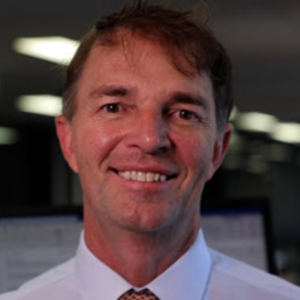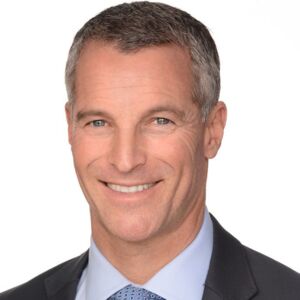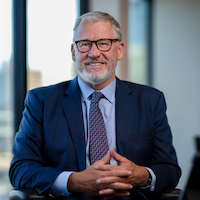Mine Super: Beating the talent crunch
By Elizabeth Fry

Aside from tackling volatile markets and dealing with an avalanche of new regulations, the top priority for Mine Super chief executive Vasyl Nair is retaining staff.
Nair says motivating and retaining staff in the tightest labour market in recent history is the main topic of conversation among asset owners.
"Acute staff shortages in the superannuation sector focus a lot of my time on ensuring that critical staff that work here in January are still here in December," he says.
The chief executive says the talent story is patchy as industry consolidation resulted in a glut of financial services professionals at the senior level.
Conversely, there is resourcing mismatch between the supply of financial services professionals and the demand for financial services skills.
"This mismatch is exacerbated at senior levels with supply shortages in the critical areas of investment operations and retirement strategy. In summary, there is excess supply of executives and excess demand for non-executive capabilities," he notes.
He says everyone is struggling to bridge the skill gap.
Skill shortages have increased to the point that some fund managers are almost hoping for an economic slowdown to relieve the pressure.
While the jobless rate held steady at 3.5 per cent in December, unemployment inched higher.
Nair thinks the latest numbers from the government statistician may be a cause for optimism - a sign that the labour market will ease this year.
He concedes that the dearth of available talent can create more tension between employees and employees.
"That said, though, if you're a worker in the superannuation industry, you have a lot of choices, and wages are high."
The contraction of the talent market is particularly notable at the smaller end of the superannuation sector as the majority of newly advertised jobs are filled by investment professionals wanting to work with the big asset owners.
"If there was a role that was advertised at Mine Super and a comparable role advertised at a larger fund with a similar compensation, it is highly likely a prospective candidate would select the larger fund to work at," he adds.
Funds like Mine Super tend to find people through networking rather than search.
"You find fewer people through search these days - the dropout from role acceptance to role commencement is surprisingly high."
The trick is to find a balance between paying competitively, adopting modern business practices and offering interesting and meaningful work.
"Compensating competitively is important, but you don't want to be a market leader on compensation with the least flexible workplace. That's not the competition you'd like to win."
In his experience, an appropriately compensated member of the team who undertakes meaningful work in a flexible and supportive environment will less likely seek other alternative employment.
Talent drought threatens retirement
But there is a new threat on the horizon.
The impact of this risk on the industry could prove significant in respect of longer-term resourcing.
The talent shortage will become even more acute as funds beef up their retirement work.
Now, super funds are mandated to have a retirement income strategy and framework.
According to Nair, this phase of superannuation demands a unique skill set.
"You will start to see the market tighten for people with expertise in decumulation," he explains.
On the one hand, Nair expects to see an inflow of retirement professionals into the super sector from leave consultancies, banks and insurers.
"Five or six years ago, we saw risk and governance individuals crossing over to super from large banks. "The trend of non-super people moving into super will continue."
On the other, he expects that the skill gap between those who have experience with retirement and those that do not to widen over the next several years.
"As long as Australia's pool of retirement savings continues to grow rapidly, the sector will require resourcing from professionals without superannuation experience. Unfortunately, I can't see the resourcing mismatch in superannuation abating within the next five years."
Meantime, the prudential regulator's new standard designed to strengthen the management of operational risk - raises the bar considerably - especially when funds are experiencing a high staff attrition rate.
Nair says CPS 230 is the most significant standard to be implemented in the last three years.
""It will require greater investment in highly critical areas, harden a number of the controls with inconsistent operation, and test many funds on the adequacy of their resources and capabilities and how they think about risk and resilience."
"APRA is significantly raising the bar for operational resilience for all funds, which is a good thing/"
"The new standard places additional pressure on resourcing in an environment of elevated role attrition with even higher role replacement costs of up to 30 per cent in some cases.
After the merger
Late last year, Mine Super and TWUSUPER entered into a preliminary non-binding Memorandum of Understanding to explore a merger between the two funds.
After bedding down the merger to create a combined $20 billion fund, Nair plans to look for other merger partners subject to the direction of the future merged trustee board.
The chief executive concedes, however, that the number of merger partners available shrinks in line with the market. That said, there is a proliferation of medium-sized funds with assets of between 20 and 50 billion.
But in his view, that doesn't mean that at $20 billion, the merged entity lacks scale.
"All funds look small compared to AustralianSuper and Australian Retirement Trust. It's an unhelpful benchmark that erodes confidence in the sector," he notes.
Like many of his peers, Nair dismisses scale as a proxy for performance. And over the last two or three years, you have seen some small funds perform incredibly well in the context of the performance test.
He cites Rainmaker Information which reveals the best MySuper investment options as of 30 November 2022.
Hostplus' Balanced option ranked first in Rainmaker's latest superannuation performance tables with a 6.3% annualised return over three years.
Telstra Super's MySuper Growth option was second at 6.1 per cent, followed by Mine SuperMine SuperHigh Growth at 6 per cent.
The year ahead
As for the year ahead, Nairi believes it will be as difficult, or more difficult than 2022.
Generally speaking, Nair believes that 2023 will be as difficult or more difficult than 2022.
"Obviously, while inflation is still rising, we believe that we have more rate risk behind us than in front of us, which is good. Hopefully, we should start to see some stabilisation this year. Mine Super's base case is still for a US recession, but he is open to the possibility of a soft landing or shallow recession through 2023,
"We are keeping a close eye on emerging markets as we see these carrying a level of geopolitical and economic tail risk for our investment strategy.
We remain committed to credit and fixed income investments, and whilst fixed income especially has been very challenging through 2022 we are seeing signs of real value in the bond outlook alongside the risks of further volatility."



